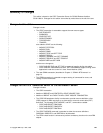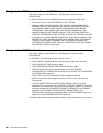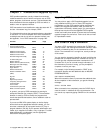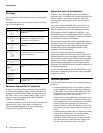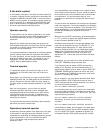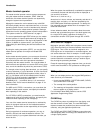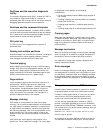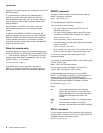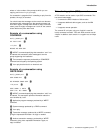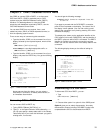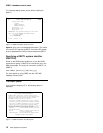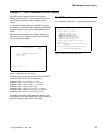
introduction
where nn is the number of the prompt to which you are
replying, and datastring is your reply.
If a transaction is purged while it is awaiting a reply from the
operator, the reply is canceled.
You should note that messages to the console can become
interspersed with messages from the operating system and
from other regions, making them difficult to read. In extreme
cases, parts of lengthy messages can ‘scroll off’ the console
screen before they have been read.
Example of a conversation using
CONVERSE
modify job2,serv 1
@17 FAULT TYPE? 2
r 17,elec 3
MESSAGE HAS BEEN SENT
1 MODIFY command specifying that transaction “serv” is to
be started; this transaction sends messages to service
groups supporting the installation.
2 The transaction response produced by a CONVERSE
command and relayed by the operating system.
3 Your reply that the fault is an electrical one.
Example of a conversation using
WRITE/READ
modify job2,usid 1
USER SIGNON ID=? 2
@25 DFH42A JOB2 USID 3
r 25,accts1 4
USER'S NAME: J. SMITH 5
USER'S TEL. NO.: 88999 6
1 MODIFY command specifying that transaction “usid” is to
be started. This transaction provides information about the
user identified by “usid”.
2 Application-program message produced by a WRITE
command.
3 System message produced by a READ command.
4 Your reply.
5 Transaction message, produced by a WRITE command,
giving the requested information. No reply is needed.
6 Another transaction message, produced by a WRITE
command, giving more requested information. Again, no
reply is needed.
Time sharing option (TSO) consoles
A TSO session can be used to input CICS commands. This
has several advantages:
It removes the MVS limitation of 99 consoles.
It supports additional device types, such as the IBM
3290.
It supports remote operation.
The console ID is 4 bytes, only one of which is used for
locally connected consoles. TSO and JES3 consoles use all
4 bytes. In addition, each console in a sysplex has an 8-byte
name.
Chapter 1. Transactions supplied by CICS 7



